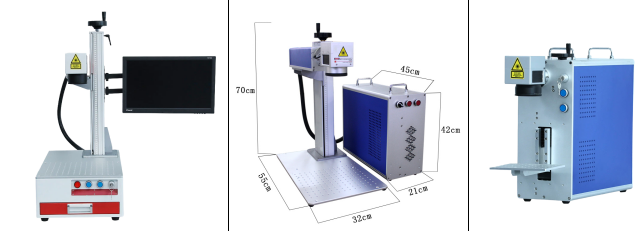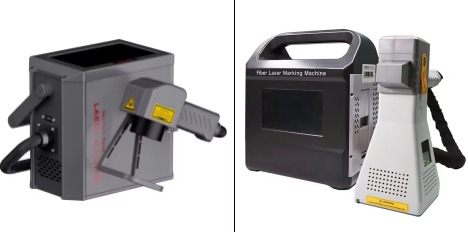Unlocking the Potential of Fiber Laser Machines: A Guide to Handheld, Desktop, and Industrial Models
LEON MACHINERY
10/6/20246 min read


The Power of Fiber Lasers
Fiber laser machines have become a game-changer in the world of engraving, cutting, and customization. Their speed, precision, and versatility make them indispensable tools across various industries, from manufacturing to the creative arts. With the ability to work with a variety of materials, including metals, hard plastics, and stones, fiber lasers are pushing the boundaries of what is possible in design and production.
In this comprehensive guide, we will explore the different types of fiber laser machines—handheld, desktop, and industrial models. We will dive into their specifications, materials they can work with, and their key applications across industries. Whether you are a small business owner, a hobbyist, or part of an industrial operation, understanding the unique advantages of fiber lasers will help you choose the right machine for your needs.
What is a Fiber Laser Machine?
A fiber laser machine is a type of laser engraving and cutting tool that uses a fiber optic cable to deliver laser energy. These lasers are commonly used for engraving, marking, and cutting a variety of materials. The core technology behind fiber lasers is the use of a solid-state laser medium, which is typically an erbium-doped fiber, to generate a high-powered beam of light. The laser beam is focused and directed onto the material, where it vaporizes, melts, or burns away the surface.
Fiber lasers are particularly known for their efficiency, precision, and ability to work with a wide range of materials, including metals (such as steel, aluminum, and brass), plastics, and even stones. Unlike CO2 lasers, which use a gas medium, fiber lasers are more energy-efficient and can achieve finer details with a smaller beam size.
Handheld Fiber Lasers: Flexibility and Precision
Handheld fiber lasers are one of the most flexible options available for engraving, marking, and light cutting tasks. With power options ranging from 20W to 50W, these machines offer an excellent balance between portability and precision.
Specifications and Features of Handheld Fiber Lasers
Power Range: Typically between 20W, 30W, and 50W.
Cooling System: Most handheld fiber lasers use air cooling, making them lightweight and easy to maintain.
Laser Wavelength: The wavelength of handheld fiber lasers is usually 1064 nm, which is ideal for engraving and cutting metals and hard materials.
Working Area: The working area for handheld fiber lasers typically ranges from 11cm x 11cm to 30cm x 30cm. This compact size allows for precision in smaller or intricate designs.
Applications of Handheld Fiber Lasers
Engraving and Marking Metal Parts: Handheld fiber lasers excel at engraving and marking metals such as stainless steel, aluminum, and brass. The precision offered by these machines makes them ideal for creating serial numbers, logos, and other identifying marks.
Personalized Products: Whether it’s engraving names on jewelry, custom logos on gift items, or detailed artwork on metal, handheld fiber lasers are perfect for creating one-of-a-kind personalized products.
Custom Signage: Handheld fiber lasers can be used for creating custom metal signs or labels, making them ideal for small-scale businesses and entrepreneurs in need of high-quality engraved signage.
Engraving Hard Plastics: These lasers can also work with hard plastics, making them a versatile tool for product customization in industries ranging from electronics to automotive parts.
Handheld fiber lasers are commonly used by small businesses, artisans, and creators who need portability and the ability to work on smaller designs or limited production runs. Their ease of use and ability to handle a wide range of materials make them a go-to choice for many.
Desktop Fiber Lasers: Power and Precision in a Compact Form
Desktop fiber lasers are designed for those who require more power and precision than a handheld model but don’t need the large working area of an industrial system. These machines typically have a power range from 20W to 100W and are ideal for businesses that need to handle a variety of materials and designs with greater efficiency.
Specifications and Features of Desktop Fiber Lasers
Power Range: Desktop fiber lasers are typically available in 20W to 100W options, providing a good balance between cutting power and precision.
Cooling System: These systems typically use air cooling or water cooling, depending on the power requirements. Water cooling systems are more common in higher-power models to ensure consistent performance.
Laser Wavelength: Like handheld fiber lasers, desktop models typically operate at a wavelength of 1064 nm, which is effective for engraving and cutting metals and plastics.
Working Area: Desktop fiber lasers are designed with a more expansive working area than handheld models, often in the range of 20cm x 20cm to 30cm x 30cm. This gives users the flexibility to work on larger items or batch processing.
Applications of Desktop Fiber Lasers
Industrial Marking and Engraving: Desktop fiber lasers are frequently used in industrial applications to mark serial numbers, logos, and barcodes on metal parts. Their precision and reliability make them ideal for traceability in manufacturing processes.
Custom Metalwork: Whether it's creating custom jewelry, engraved tools, or architectural elements, desktop fiber lasers are perfect for working with metals. Their fine detail capabilities allow users to engrave intricate designs, logos, and text with high precision.
Plastic Engraving and Cutting: Desktop fiber lasers can be used to engrave or cut a variety of plastics, such as ABS, PVC, and polycarbonate. The ability to work with a broad range of materials makes these machines highly versatile.
Prototyping and Design: Designers and engineers use desktop fiber lasers to create prototypes and models. The ability to make precise cuts and engravings on various materials allows for the development of detailed, accurate designs.
Desktop fiber lasers are the go-to solution for businesses that need to scale their production and require both flexibility and power. Their efficiency and precision make them ideal for a range of applications across industries.
Industrial Fiber Lasers: High-Powered Systems for Large-Scale Production
Industrial fiber lasers are designed for heavy-duty applications where high power and large working areas are necessary. These machines can handle power ranges from 20W up to 1000W or more, allowing them to process thicker materials and handle larger production volumes.
Specifications and Features of Industrial Fiber Lasers
Power Range: Industrial fiber lasers can range from 20W to 1000W, with higher power models being suitable for cutting and engraving thick materials.
Cooling System: Industrial fiber lasers often feature water cooling systems to manage the heat generated by the high power of the laser. This ensures consistent performance during long production runs.
Laser Wavelength: The wavelength of industrial fiber lasers is typically 1064 nm, providing high absorption rates for metals and enabling fine detail in engraving and cutting.
Working Area: Industrial fiber lasers feature much larger working areas compared to desktop and handheld models, ranging from 50cm x 50cm to over 1 meter in length.
Applications of Industrial Fiber Lasers
Metal Cutting: Industrial fiber lasers are used extensively in industries like automotive and aerospace for cutting thick metal sheets, tubes, and parts. With their high-powered lasers, they can cut through materials like steel, stainless steel, aluminum, and titanium with incredible speed and accuracy.
Laser Welding: Fiber lasers are also used for laser welding in industries that require strong, precise joints. They offer excellent control over the welding process and can work on a variety of materials, including metals and plastics.
Mass Production: For businesses looking to produce large quantities of parts, industrial fiber lasers provide the speed and accuracy needed to maintain high production rates without compromising on quality. Their automation capabilities make them ideal for high-volume production.
High-Precision Engraving: In addition to cutting, industrial fiber lasers are also used for engraving large-scale designs, logos, or serial numbers on industrial parts. The ability to engrave with high precision ensures that these marks are durable and easily readable.
The Future of Fiber Laser Technology
As fiber laser technology continues to advance, we can expect even more innovations in laser power, speed, and material compatibility. The latest trends suggest that fiber lasers will continue to drive automation in manufacturing processes and expand into new industries.
With growing demand for customization, fiber lasers will likely play an even bigger role in creating personalized products, from custom gadgets to bespoke jewelry and decor. As technology improves, fiber lasers will become more accessible, making them an even more powerful tool for small businesses and hobbyists alike.
Choosing the Right Fiber Laser for Your Needs
Choosing the right fiber laser machine depends on your specific needs, such as the materials you work with, the complexity of your designs, and the scale of your production. Handheld fiber lasers are perfect for small, intricate designs and personalization tasks, while desktop models offer more power and precision for medium-sized projects. Industrial fiber lasers, on the other hand, are suited for large-scale production and heavy-duty applications.
No matter which type of fiber laser you choose, it’s clear that these machines are revolutionizing industries across the globe. With their unmatched precision, speed, and versatility, fiber lasers will continue to be a driving force behind innovation in manufacturing, design, and customization.


